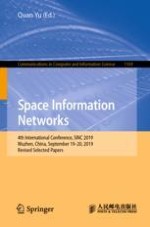2020 | Buch
Space Information Networks
4th International Conference, SINC 2019, Wuzhen, China, September 19–20, 2019, Revised Selected Papers
herausgegeben von: Quan Yu
Verlag: Springer Singapore
Buchreihe : Communications in Computer and Information Science
